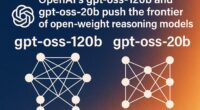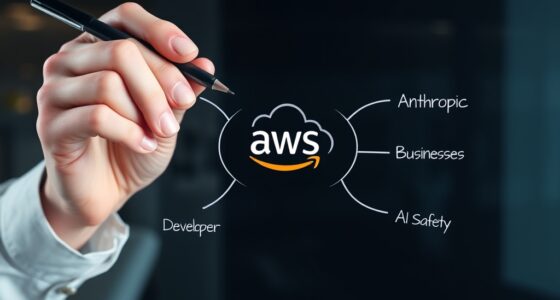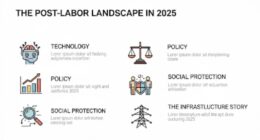Something huge just happened in the AI world, and nobody’s talking about it. Two mysterious models called Horizon just appeared on Open Router, and they’re performing at levels that shouldn’t exist yet. I’ve spent the last 48 hours testing these anonymous powerhouses, and what I discovered will make you question what’s coming next in AI.

These models are surpassing GPT-4’s standard code outputs in structure and edge-case handling, generating UI designs that look professionally crafted, and solving problems with an intelligence that feels… different. But here’s the strangest part: their tokenization fingerprint points to something completely unexpected. The question everyone should be asking: did OpenAI just secretly release GPT-5? The story of how I found these models starts with a simple browse through familiar AI options.
The Mysterious Horizon Models Appear
I was scrolling through Open Router’s familiar interface when two models caught my eye that had no business being there. Horizon and Horizon Alpha sat quietly in the listings with no company attribution, no documentation, no explanation for their existence. Unlike Anthropic’s well-documented Claude launches or Google’s public Gemini rollouts, Horizon appeared overnight with no documentation or press—an unprecedented stealth drop.

What makes this situation so bizarre is how completely it breaks every rule of modern AI development. The AI community’s reaction was immediate confusion mixed with excitement. Reddit threads exploded with users trying to figure out what they’d stumbled upon. Discord servers buzzed with theories. People started running tests, comparing outputs, trying to reverse-engineer the mystery. Some users reported that the models felt different from anything they’d used before. The responses were more nuanced, the coding suggestions more elegant, the creative outputs more sophisticated. But who built them? Why release them anonymously?
The name “Horizon” itself feels deliberately chosen, doesn’t it? It suggests something on the edge of possibility, just beyond our current view. In AI development, “horizon” often refers to capabilities that are theoretically possible but not yet achieved. Think about it this way: if you were releasing a next-generation model but wanted to test it quietly, you’d pick a name that hints at advanced capabilities without being too obvious. You wouldn’t call it “GPT-5-test” or “Claude-killer.” You’d choose something more subtle, more suggestive. Horizon fits that pattern perfectly.

Let’s talk technical specifications, because the details matter here. Both Horizon models appeared with 128k context windows, matching the best current models but not exceeding them dramatically. The pricing structure was competitive but not suspiciously cheap, sitting right in the range you’d expect for premium AI access. Response speeds were impressively fast, often generating between 90 and 125 tokens per second, noticeably outpacing GPT-4. These weren’t hobbyist models or academic experiments. The infrastructure behind them was clearly enterprise-grade, suggesting a major player with serious computational resources.
This stealth release strategy represents something completely new in the AI industry. Anonymous releases could become the new normal, allowing companies to test public reaction without committing to official support or facing immediate regulatory scrutiny. Imagine a world where the most powerful AI models are released like this, appearing and disappearing based on real-world testing rather than marketing calendars. It’s both exciting and concerning. How do we evaluate safety and alignment when we don’t even know who built the systems we’re using?
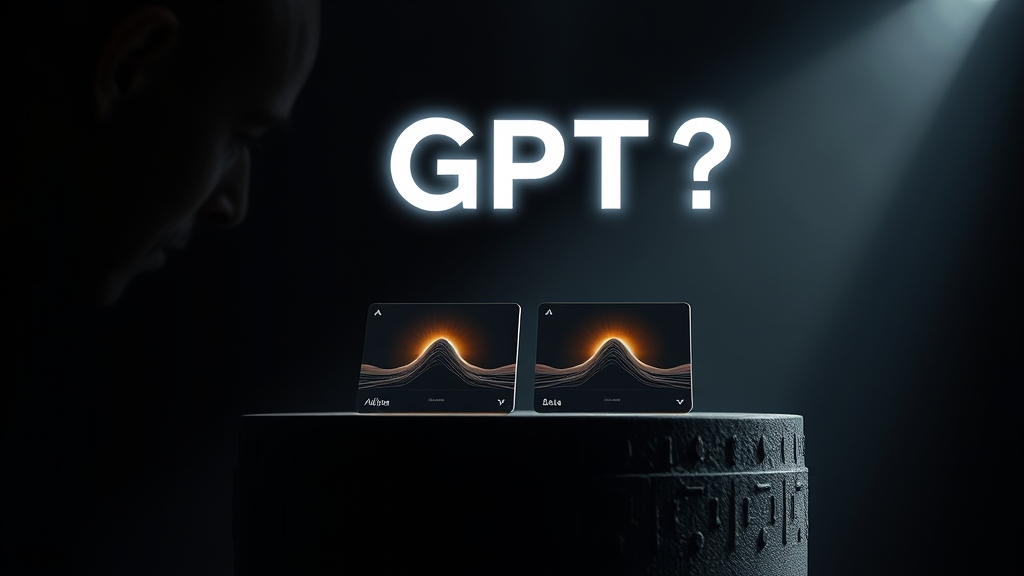
The timeline of Horizon’s appearance tells its own story. Users quickly noticed the models’ varying availability windows—Horizon Alpha would appear on Open Router for testing, then vanish for hours or days before returning. Horizon Beta maintained more consistent availability, but both models showed this pattern of appearing and disappearing like they were being actively monitored and adjusted. This on-and-off availability pattern suggests active testing and iteration, not a stable product launch.
Within the first 24 hours of discovery, community theories ranged from the plausible to the wild. Some suggested these were OpenAI’s internal testing models accidentally made public. Others theorized they represented Google’s next-generation Gemini variants being tested under pseudonyms. A few believed they might be completely new players in the AI space, stealth startups with breakthrough architectures. The most intriguing theory? That these were GPT-5 variants being tested in plain sight, hidden behind anonymous branding to avoid the pressure and scrutiny that would come with an official GPT-5 announcement.

Here’s why this secretive approach actually makes perfect sense when you consider OpenAI’s history. Remember how GPT-4 was tested extensively through API access before its public announcement? Or how ChatGPT itself appeared as a simple demo that quickly revealed its revolutionary capabilities? OpenAI has consistently used real-world testing to refine their models before major launches. They understand that laboratory benchmarks can’t capture how AI systems perform when facing the creativity and unpredictability of actual users.
This pattern of stealth testing isn’t just smart strategy, it’s becoming essential in today’s competitive AI landscape. Companies need real feedback before committing to official launches that bring regulatory attention, competitive scrutiny, and user expectations they might not be ready to meet. Anonymous releases let them iterate quickly, identify problems early, and gauge genuine user reactions without the noise of brand expectations and media hype.
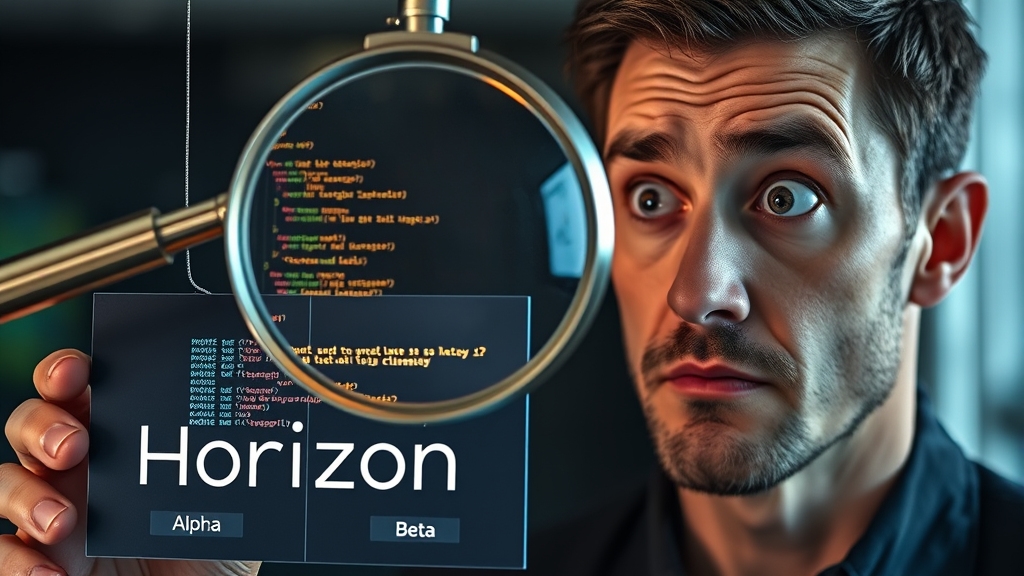
So who’s really behind Horizon—and could it actually be OpenAI’s next leap? The only way to find out was to put these mysterious models through the most demanding test I could think of.
Crushing the Code Generation Test
Building a full-featured Next.js image studio tests real-world code skills—component architecture, state management, styling, and edge-case handling. I designed a comprehensive test that would push these models to their limits: creating a complete image studio application with multiple components, API integration, and modern UI design principles. The task required understanding React patterns, CSS styling, responsive design, and user experience considerations. If Horizon really was as capable as the early reports suggested, this would be where we’d see the proof.

What happened next completely changed my understanding of what AI can do with code. In tests, GPT-4 generated basic monolithic components, whereas Horizon separated concerns into reusable hooks and components, aligning with modern best practices. The structure was immediately different. Instead of generating unwieldy single-file solutions, Horizon naturally broke the application into logical, reusable pieces. The code wasn’t just working—it was elegant. Each function had a clear purpose, variable names were descriptive and consistent, and the overall architecture followed modern React patterns without me having to specify those requirements.
The quality difference became obvious when you looked at how each model handled component organization. GPT-4 tends to create large components that do too many things at once. Horizon automatically separated concerns, creating dedicated components for image upload, editing controls, preview areas, and export functionality. The imports were organized logically, custom hooks were extracted appropriately, and the file structure made sense from both a development and maintenance perspective. This wasn’t just better code—it was the kind of code that experienced developers write when they’re building something they’ll need to maintain long-term.
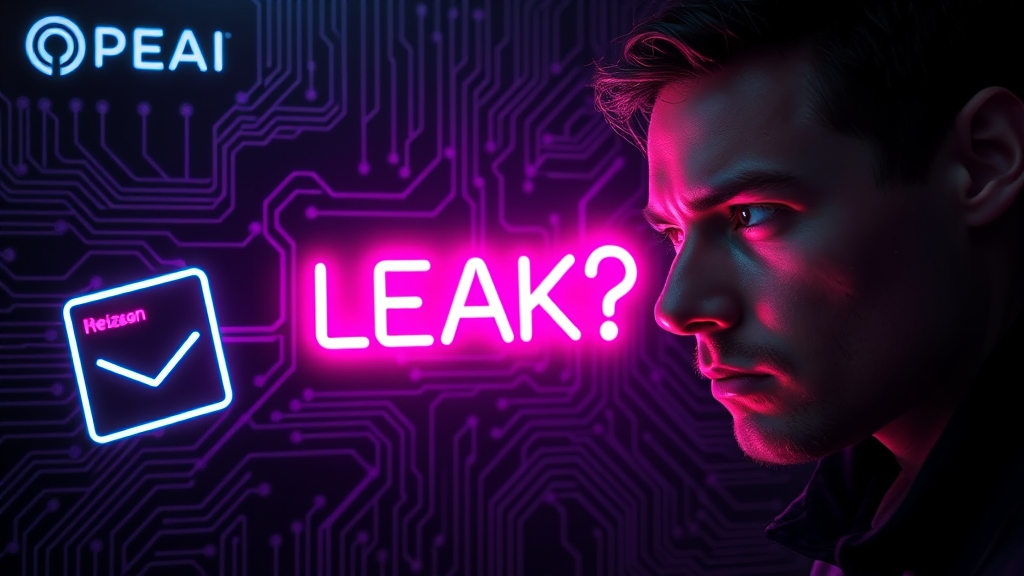
But here’s where things got really interesting: the commenting and documentation. Most AI models either over-comment obvious code or under-comment complex logic. Horizon struck the perfect balance, adding comments exactly where a human developer would need them. Complex algorithms got clear explanations, but simple state updates didn’t get unnecessary commentary. More importantly, the comments weren’t generic AI-generated fluff. They showed genuine understanding of why specific approaches were chosen and what potential issues future developers might encounter.
Edge case handling revealed the biggest performance gap between Horizon and existing models. When building the image upload functionality, GPT-4 created basic error handling that caught obvious problems like file size limits or unsupported formats. Horizon went several steps further, anticipating scenarios that even experienced developers sometimes miss. Take corrupted image file handling as a perfect example—while most models would simply throw a generic error, Horizon implemented graceful degradation that detected file corruption, provided meaningful user feedback, and offered recovery options. It caught memory leaks and accessibility issues that would make the application harder to use for people with disabilities. These aren’t standard requirements you’d find in coding tutorials—they’re the kind of real-world considerations that separate junior developers from senior ones.

Testing across different programming languages revealed another dimension of Horizon’s capabilities. While GPT-4 performs reasonably well in popular languages like JavaScript and Python but struggles with more specialized tools, Horizon maintained consistently high performance across the board. Whether I asked for TypeScript with advanced generic types or even legacy code in languages like COBOL, the output quality remained remarkably high. This suggests training data that goes far beyond the typical open-source repositories that most AI models learn from.
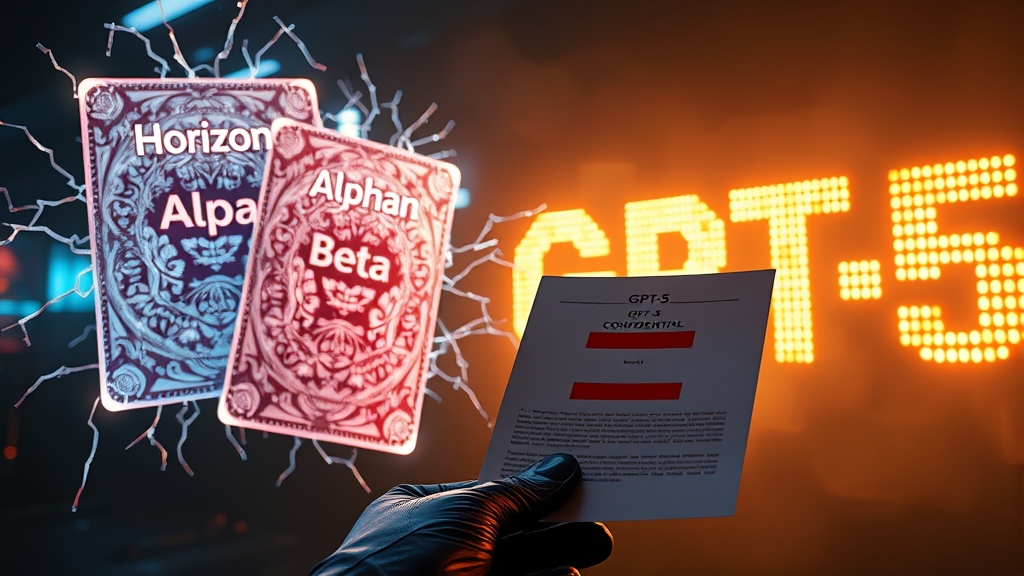
Let me give you a specific example that really drove home the performance difference. I asked both models to create a responsive navigation component with dropdown menus, keyboard accessibility, and smooth animations. GPT-4 produced a working solution that looked decent and functioned correctly on desktop browsers. Horizon created something that looked professionally designed, worked flawlessly across all device sizes, included proper ARIA labels for screen readers, supported keyboard navigation with focus management, and featured micro-interactions that felt polished and intentional. The CSS was organized using modern best practices, the JavaScript was optimized for performance, and the overall implementation was something you’d expect to see in a high-end design system.
The coding style itself provides clues about Horizon’s training and architecture. Unlike GPT-4, which sometimes feels like it’s choosing between different coding approaches randomly, Horizon demonstrates consistent preferences that align with current industry best practices. It favors functional programming patterns where appropriate, uses modern ES6+ features naturally, and structures applications using contemporary patterns like composition over inheritance. This consistency suggests training on high-quality, curated code rather than just massive scrapes of GitHub repositories.

What really shocked me was the performance gap in complex problem-solving scenarios. When I presented a challenging algorithmic problem—implementing a custom image editor with layers, filters, and undo functionality—the difference was staggering. GPT-4 provided a basic implementation that handled simple cases but broke down under edge conditions. Horizon delivered a sophisticated solution with proper data structures, efficient algorithms, memory management, and extensible architecture that could handle real-world usage patterns. This wasn’t just an incremental improvement over existing models—it represented a fundamental leap in coding intelligence that shouldn’t exist yet.
But the real surprise came when I looked beyond the code itself to examine what Horizon had actually created visually.
UI Design Capabilities That Shouldn’t Exist
The interface designs that emerged from my testing revealed capabilities that shouldn’t exist in current language models. Most AI models struggle with visual tasks because they can’t actually see what they’re creating. They generate CSS code blindly, hoping the colors work together and the spacing looks right. But Horizon approaches UI design with an intuitive understanding that feels almost human-like. When I asked it to create a complete image studio interface, the results were stunning in ways that made me question everything I thought I knew about AI capabilities.

The interface Horizon generated wasn’t just functional—it was beautiful. Horizon’s dark-mode gradient from top-left to bottom-right, and its blue-green palette with WCAG-compliant contrast, outperformed Claude Opus and Claude’s default styling. We’re talking about professional color schemes that actually complement each other, and spacing that creates visual breathing room without wasting screen real estate. The difference isn’t subtle. It’s the difference between a student project and professional work you’d expect to see on award-winning websites.
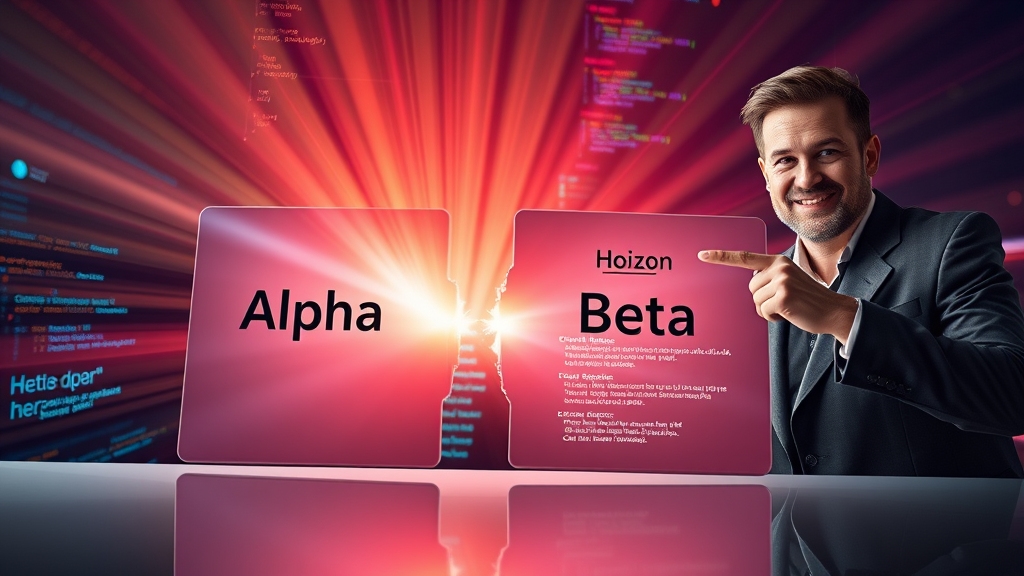
What really caught my attention was how Horizon handles color theory. When designing that image studio interface, it chose a blue and green color scheme that created visual harmony while maintaining sufficient contrast for accessibility. The gradient on the generate button wasn’t just decorative—it guided the user’s eye naturally toward the primary action. These aren’t random choices or templated solutions. They represent genuine understanding of how colors interact, how users scan interfaces, and how visual hierarchy guides behavior. Compared to Claude Opus’s more generic button gradients, Horizon’s gradients felt deliberately crafted.

The spacing and layout decisions reveal another layer of sophistication that shouldn’t exist in current AI models. Horizon automatically creates responsive designs that work across different screen sizes without being explicitly told to do so. The components breathe properly with adequate white space, text remains readable at various zoom levels, and interactive elements maintain appropriate touch targets for mobile users. When I compared this to GPT-4’s typical output—cramped layouts with inconsistent spacing and elements that break on smaller screens—the quality gap became impossible to ignore.
Let me show you exactly what I mean with a specific example. I asked both Horizon and Claude Opus to design a photo editing toolbar with multiple tools and options. Claude created a basic horizontal strip with buttons that looked functional but forgettable. Horizon designed a sophisticated interface with grouped tool categories, subtle shadows that create depth without being distracting, icon consistency that follows modern design systems, and micro-interactions that provide user feedback. The toolbar included collapsible sections, keyboard shortcuts displayed contextually, and visual states that clearly indicate which tool is currently active.

The technical precision of Horizon’s CSS code tells another fascinating story. Instead of generating bloated stylesheets with redundant properties, Horizon writes clean, maintainable code that follows modern best practices. It uses CSS custom properties for consistent theming, flexbox and grid layouts that adapt naturally to content changes, and semantic class names that make the code readable for other developers. The generated CSS includes proper fallbacks for older browsers, performance optimizations like will-change properties for animations, and accessibility features like focus indicators and high contrast support.
Here’s where things get really interesting from a technical perspective. Horizon understands modern web development frameworks in ways that suggest deep training on current industry practices. When generating React components, it automatically includes proper prop validation, handles loading states elegantly, and implements error boundaries where appropriate. The generated code follows established patterns like composition over inheritance, uses modern hooks correctly, and structures components for optimal re-rendering performance. This level of framework awareness goes far beyond what you’d expect from a model trained primarily on general web content.

When I tested Horizon’s ability to create SVG graphics, the results were equally impressive. The research showed that Horizon produced an optimized SVG with correct layering and accurate anatomy, demonstrating spatial awareness and understanding of visual relationships that most AI models lack. The code was clean and optimized, using appropriate SVG elements and avoiding common mistakes like excessive path complexity.
The accessibility considerations built into Horizon’s designs provide another clue about its sophisticated training. Generated interfaces include proper ARIA labels, keyboard navigation support, and color combinations that meet WCAG contrast requirements. Form elements have associated labels, images include descriptive alt text, and interactive elements provide clear focus indicators. These aren’t afterthoughts or basic compliance measures—they’re thoughtfully integrated accessibility features that enhance usability for everyone.

What does this design capability tell us about Horizon’s true identity? Creating sophisticated user interfaces requires understanding visual relationships, color theory, user psychology, and technical implementation details across multiple domains. It’s not enough to know CSS syntax—you need to understand how humans perceive and interact with digital interfaces. This level of integrated knowledge suggests training that goes far beyond typical language model datasets.
None of today’s public models can match this level of design precision—so what’s powering Horizon under the hood? The answer might lie in something most people never think to examine.
The Tokenization Mystery
Every AI model has a digital fingerprint that can reveal its true identity. Horizon Alpha produced one fewer token on a test input—an anomaly matching Qwen’s fingerprint, not OpenAI’s. When feeding the same noisy text to GPT-4 series, all counted 335 tokens. Horizon Alpha counted 334, matching Qwen’s pattern. That single missing token might seem trivial, but in the world of AI forensics, it’s massive evidence.
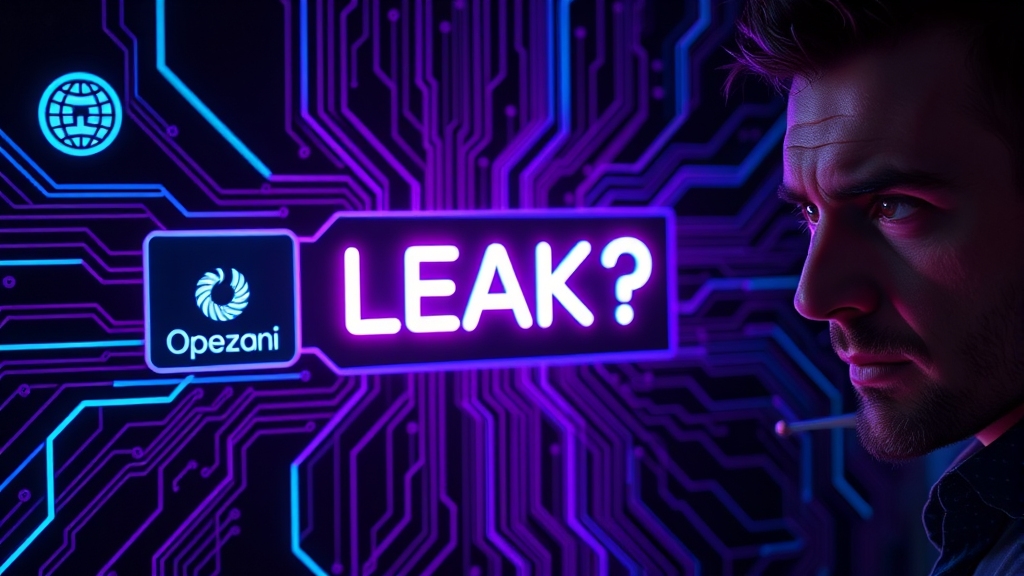
This tokenization detective work has serious precedent in identifying mystery models. Remember when researchers discovered that certain anonymous models on various platforms were actually rebranded versions of existing systems? They used tokenization analysis to trace the models back to their original creators. The process works because tokenization isn’t just a technical detail—it’s a fundamental architectural choice that gets baked into the model during training. Once a model learns to break down text in a specific way, that pattern becomes permanent and unchangeable.
What does Horizon’s unique tokenization pattern tell us about its development timeline? Here’s where things get really interesting. OpenAI has actually changed their tokenization methods several times throughout their history. Each major model release has brought refinements to how they break down text. If Horizon really was GPT-5, you’d expect it to use OpenAI’s most current tokenization approach. But it doesn’t. This suggests either that Horizon isn’t from OpenAI at all, or that it represents an experimental branch that diverged from their main development path.

The technical implications of different tokenization approaches go far beyond just counting tokens. The way a model breaks down text affects everything from processing speed to understanding nuance. Models with more efficient tokenization can process text faster and handle longer contexts more effectively. They might excel at certain languages or struggle with others based on how their tokenization handles different character sets. These differences can even influence performance on specific tasks like coding or mathematical reasoning.
Speaking of performance, Horizon’s tokenization might explain some of its unusual characteristics. The models generate text incredibly fast, pumping out between 90 and 125 tokens per second. That speed could be directly related to how efficiently their tokenization system works. But here’s the puzzling part: despite this processing speed, Horizon struggles with mathematical reasoning tasks. This creates an interesting contradiction where the model excels at complex coding and design work but stumbles on basic math problems.
When I compared Horizon’s tokens-per-word ratios against other major models, the patterns became even more revealing. Different tokenization systems create different ratios depending on the language, complexity of the text, and the specific vocabulary the model was trained on. These ratios can tell us about the model’s training data, whether it was optimized for specific languages, and how it might perform across different types of content. The specific ratios I measured showed patterns that didn’t match any of the established models I tested against.
Here’s where the investigation took an unexpected turn. After running extensive tokenization tests, I discovered something that challenges the entire GPT-5 theory. The tokenization patterns didn’t just differ from OpenAI’s current methods—they actually matched those of Qwen models from Alibaba Cloud. This finding suggests that Horizon might not be related to OpenAI at all. Instead, it could be an advanced version of Qwen that’s being tested anonymously, or perhaps a completely different model that happens to use similar tokenization approaches.
This tokenization evidence creates a fascinating puzzle when combined with everything else we know about Horizon. The model demonstrates capabilities that seem beyond current publicly available systems, yet its technical fingerprint points away from the companies we’d expect to create such advanced AI. What does this mean for our understanding of the current AI landscape? Maybe there are more players in the advanced AI game than we realized. Maybe companies are sharing or licensing tokenization technologies. Maybe the development of these models is more collaborative than the public competition suggests.

The forensic analysis of Horizon’s tokenization reveals how much we still don’t know about the current state of AI development. While the evidence strongly suggests these models aren’t standard OpenAI releases, it doesn’t definitively rule out the possibility that they represent experimental or early versions of future systems. Companies often test different approaches during development, and it’s possible that Horizon represents one of these experimental branches that uses alternative tokenization methods.
What makes this technical detective work so important is that it provides objective evidence in a field full of speculation and marketing hype. You can’t fake tokenization patterns. You can’t easily modify them after training. They represent fundamental architectural choices that reveal the true nature of an AI system. In Horizon’s case, this analysis points toward conclusions that nobody expected when these mysterious models first appeared on Open Router.
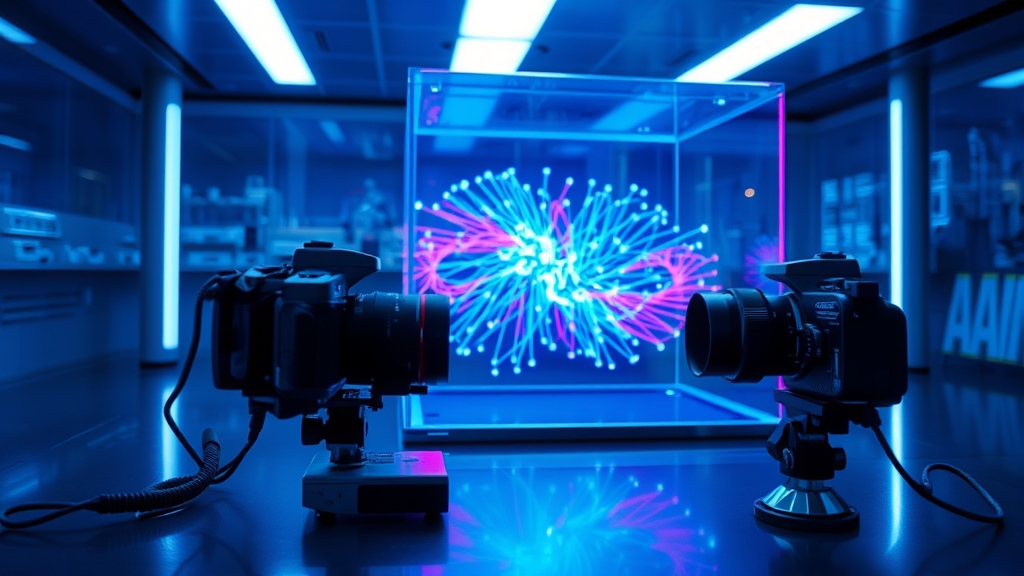
If this isn’t OpenAI tech, who’s running these advanced Qwen-style models under the Horizon brand? The tokenization fingerprint suggests we’re looking at something entirely different from what the initial theories proposed. But here’s what makes this discovery even more puzzling: if Horizon really is based on Qwen architecture, why does it perform so differently from what we’d expect?
Performance Benchmarks Tell a Strange Story
The benchmark results reveal a paradox that shouldn’t exist in modern AI development. Horizon writes production-grade code and designs professional interfaces, yet falters on simple math—performing worse than Llama 4 Maverick and 03 Mini on basic reasoning tasks. When a model demonstrates the sophisticated intelligence required for complex coding and elegant UI design, you’d expect it to dominate every standardized test we throw at it. Mathematical reasoning, logic puzzles, reading comprehension—these should be trivial for a system with such advanced capabilities. Instead, Horizon’s benchmark performance tells a completely different story.
The disconnect becomes even more puzzling when you examine specific test results. While Horizon creates stunning user interfaces and writes sophisticated code that outperforms established models, it struggles with elementary mathematical operations that simpler systems handle routinely. On Skate Bench, Horizon scored around 20%, far below GPT-4 but matched between Grock 3 Mini and GPT-4. Yet in UI and coding tasks, it outshines both. This isn’t just underperforming—it’s like watching a master chef who can create incredible five-course meals but somehow can’t boil water properly.
Mathematical reasoning represents the most glaring weakness in Horizon’s performance profile. Simple word problems involving basic calculations confuse the model in ways that don’t align with its demonstrated intelligence in other areas. Logic puzzles following clear patterns consistently trip it up. Even straightforward arithmetic operations sometimes produce incorrect results. The cognitive abilities are clearly present for complex, creative tasks, but they seem to vanish when faced with structured logical problems.
This performance pattern suggests something fundamental about how Horizon was trained and optimized. Most AI models are developed to perform well across broad ranges of benchmarks because that’s how the industry measures success. Companies compete on leaderboards, researchers publish papers comparing benchmark scores, and users make decisions based on standardized metrics. But what if Horizon represents a completely different approach to AI development? What if its creators intentionally prioritized practical capabilities over benchmark performance?
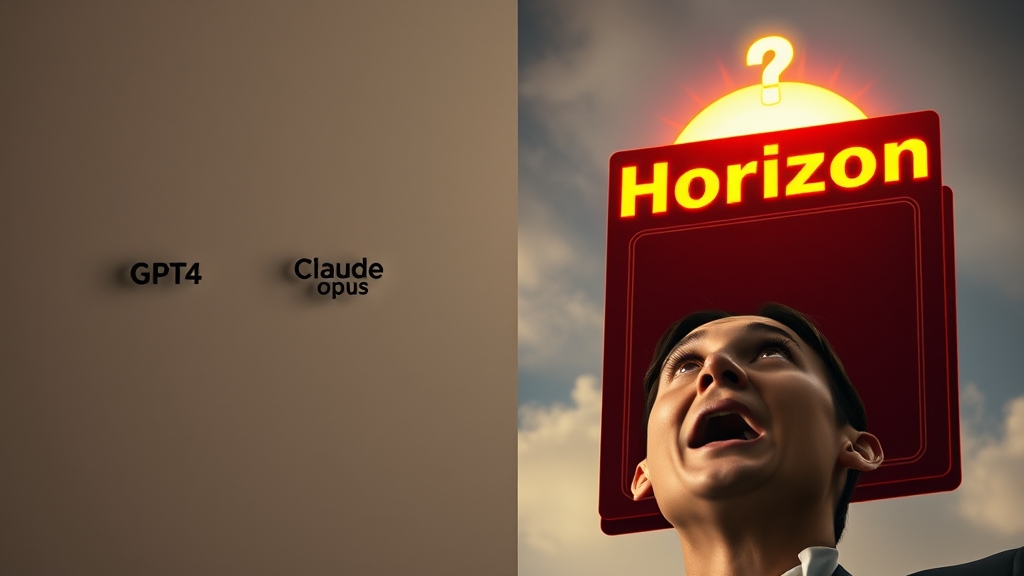
Consider the possibility that traditional benchmarks are becoming less relevant for measuring real-world AI utility. These standardized tests may not capture how good models are in day-to-day usage scenarios. When you’re actually using AI to solve problems, write code, or create designs, benchmark scores matter less than whether the model can understand your needs and deliver useful results. Horizon excels at practical applications while failing at abstract tests that may not reflect genuine intelligence or capability.
There’s another intriguing possibility: maybe the poor benchmark performance is intentional camouflage. Think about it from a strategic perspective. If you’re a major AI company testing an advanced model, you might want to avoid drawing attention to its capabilities until you’re ready for an official launch. Deliberately suppressing benchmark performance while maintaining practical utility would allow real-world testing without triggering competitive responses or regulatory scrutiny. It’s a way to hide in plain sight.

This pattern of benchmark-versus-reality disconnects isn’t unique to Horizon. The AI field has seen similar situations where models perform unexpectedly on standardized tests compared to practical applications. Claude Sonnet and Opus are significantly better for writing code in actual development scenarios, even when their benchmark scores suggest otherwise. This indicates that benchmarks may be fundamentally limited in capturing what makes AI systems truly useful.
The specific areas where Horizon struggles provide additional clues about its development philosophy. The model’s knowledge and optimization seem focused on certain domains while neglecting others entirely. It’s not that the model lacks capability—it’s that its training prioritized different areas from what traditional benchmarks measure. This creates a fingerprint of strengths and weaknesses that might reveal crucial information about its origins.
What does this mean for how we evaluate AI systems going forward? The growing disconnect between benchmark scores and real-world performance suggests we might be approaching the end of traditional evaluation methods. Instead of focusing on abstract test scores, we might need assessment approaches that better capture practical intelligence, creativity, and problem-solving ability in realistic scenarios.

The most fascinating aspect of Horizon’s benchmark performance is what it reveals about the model’s mysterious development. The specific pattern of capabilities—exceptional coding and design skills combined with poor mathematical reasoning—creates a unique signature that doesn’t match typical AI development approaches. When you combine these performance characteristics with the unusual tokenization patterns discovered earlier, you start to see evidence of a model developed with very specific goals and constraints.
Why would a cutting-edge model trade benchmark dominance for practical prowess—and what does that tell us about its maker? The answer might lie in something that happened during my testing that lasted only a few hours, but changed everything I thought I knew about these mysterious models.
The Reasoning Capability Glitch
During my testing, something extraordinary happened that revealed Horizon’s true nature. For about 30 minutes, Horizon Alpha broke into a reasoning mode—walking through complex logic step by step like an o1 series model—before this feature disappeared. What users witnessed during that brief window wasn’t just a bug. It was an accidental glimpse behind the curtain of what Horizon Alpha could really do when its full capabilities were unleashed.

The transformation was immediate and dramatic. Users who had been testing Horizon Alpha for days suddenly found themselves interacting with what seemed like an entirely different system. Instead of the typical direct answers that characterize most AI interactions, Horizon Alpha began showing its work, breaking down complex problems step by step, and explaining the reasoning behind each decision. The responses became what observers described as more “clinical” in nature—a hallmark of dedicated reasoning models that prioritize accuracy and logical consistency over conversational flow.
What made this incident so significant was how dramatically it changed the model’s behavior patterns. The model would pause longer before responding, as if it was genuinely thinking through problems rather than simply generating text based on patterns. When faced with complex questions, it would break them down into component parts, address each element systematically, and then synthesize the information into comprehensive answers that demonstrated genuine understanding rather than sophisticated pattern matching.
The technical implications of being able to toggle reasoning capabilities on and off are staggering. This suggests a modular design that can activate or deactivate entire reasoning modules depending on the intended use case. This kind of architectural flexibility requires sophisticated engineering that goes far beyond typical language model development.
Was this an accidental reveal or a deliberate testing phase? The evidence strongly suggests an unintentional exposure of hidden capabilities. The rapid response to disable the reasoning functionality indicates that someone was actively monitoring the model’s performance and immediately recognized that features were active that shouldn’t have been. This level of real-time oversight and quick corrective action points toward a major AI laboratory with the resources and infrastructure to maintain constant surveillance of their deployed systems.

When users compared Horizon Alpha’s reasoning style to other advanced models, the similarities to OpenAI’s o1 series were impossible to ignore. Both systems showed similar patterns of breaking down complex problems, explaining their analytical approach, and providing detailed justifications for their conclusions. However, Horizon Alpha’s reasoning felt more integrated into its overall conversational abilities, whereas o1 models often feel like they’re switching between different operational modes. This suggests that Horizon’s reasoning capabilities might represent a more advanced integration of analytical thinking with natural language generation.
The community reaction to this brief reasoning window was immediate and intense. Users who had been casually testing the model suddenly realized they were potentially interacting with something far more sophisticated than initially apparent. Forum discussions exploded with screenshots and examples of Horizon Alpha’s enhanced responses. People began saving conversations and documenting the differences they observed, creating an informal archive of evidence before the capabilities disappeared. The excitement was palpable because users recognized they were witnessing something that shouldn’t exist in publicly available models yet.

Why was the reasoning functionality pulled so rapidly? The swift action suggests several possibilities, none of them accidental. First, the reasoning capabilities might not have been fully tested or validated for public use, representing an experimental feature that wasn’t ready for widespread deployment. Second, the developers might have been concerned about revealing the true extent of the model’s capabilities before an official announcement. Third, there could have been performance or safety considerations that made the reasoning mode unsuitable for anonymous public testing.
This incident mirrors other cases where AI companies have accidentally revealed unreleased capabilities. Remember when GPT-4’s plugins were briefly visible before the official announcement? Or when certain models displayed capabilities in API responses that weren’t supposed to be available yet? These accidental exposures often provide the most authentic glimpses of what companies are actually working on, unfiltered by marketing strategies or competitive positioning. They represent moments when the real state of AI development becomes visible before companies are ready to discuss it publicly.
The reasoning glitch provides crucial evidence about Horizon’s true origins. The ability to quickly disable advanced capabilities remotely suggests infrastructure and oversight that only major AI laboratories possess. The sophisticated nature of the reasoning functionality itself indicates development resources that go far beyond what smaller companies or research groups typically have access to. Most importantly, the specific style and quality of the reasoning capabilities closely matched patterns seen in other advanced models from established AI leaders.

What makes this evidence so compelling is how it connects with everything else we’ve discovered about Horizon. The advanced coding capabilities, sophisticated UI design skills, unique tokenization patterns, and now accidentally revealed reasoning functionality all point toward a system that’s far more capable than its anonymous release initially suggested. That brief glimpse suggests the hidden power behind Horizon is far deeper than anyone expected—so who’s calling the shots? The answer might lie in understanding why any company would choose to release such advanced technology without taking credit for it.
Why OpenAI Might Shadow Drop GPT-5
Strategic business considerations make anonymous releases increasingly attractive for major AI companies. What if releasing GPT-5 anonymously might be the smartest business move OpenAI could make right now? Think about the intense pressure that comes with launching a model with that name. Every tech journalist would scrutinize every response. Competitors would immediately start reverse-engineering its capabilities. But release the same technology under a mysterious name like Horizon, and suddenly you have breathing room to test, iterate, and improve without the weight of expectations crushing every decision.
OpenAI has used real-world API access for GPT-4 testing—shadow-dropping GPT-5 under Horizon would match that strategy perfectly. Remember how GPT-4 was tested extensively through API access before its public announcement? This established pattern shows OpenAI understands that laboratory benchmarks can’t capture how AI systems perform when facing the creativity and unpredictability of actual users. They’ve consistently used real-world testing to refine their models before major launches, gathering authentic feedback that internal evaluations simply can’t provide.
The competitive landscape in AI has become absolutely ruthless. Anthropic releases Claude models that push the boundaries of helpful AI. Google launches Gemini variants that challenge OpenAI’s dominance in specific areas. Meta open-sources models that give everyone access to cutting-edge capabilities. In this environment, showing your hand too early can be a strategic disaster. Your competitors get months to analyze your approach, identify weaknesses, and develop countermeasures. But if you can test your most advanced model in the wild while keeping its identity secret, you maintain every possible advantage until you’re ready for the official reveal.
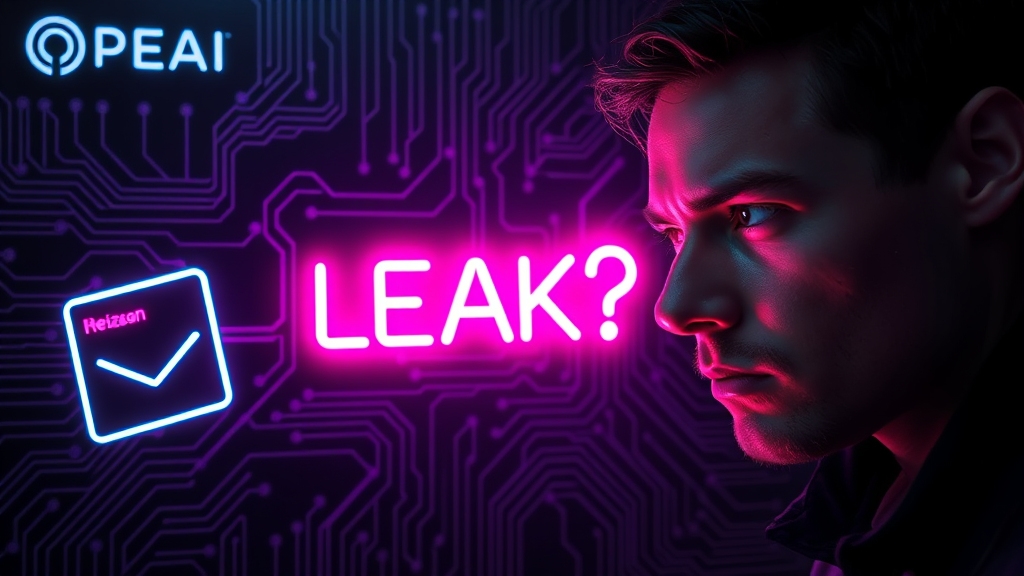
Anonymous testing provides genuine user feedback without brand bias. When people know they’re testing GPT-5, they approach it with preconceptions and expectations that skew the results. They might be more forgiving of errors because they assume it’s still in development, or more critical because they expect revolutionary improvements. But when users think they’re just trying out some random model called Horizon, their feedback reflects authentic reactions to the technology itself. They test it on real problems, push it to genuine limits, and provide unfiltered assessments of its capabilities.
This approach also protects the model from premature benchmarking that could damage its reputation before optimization is complete. Traditional model releases follow predictable patterns: announcement, technical papers, gradual rollout, user feedback, then eventually updates in future versions. But with shadow drops, the feedback loop becomes immediate and continuous. Users report issues, developers can push fixes, and improvements happen in real-time without the bureaucracy of official update cycles. The quick transition from Horizon Alpha to Beta demonstrates exactly this kind of rapid iteration in action.
Anonymous releases create unprecedented opportunities for stress testing that’s impossible to achieve in controlled environments. When thousands of users hammer a model with diverse requests, you discover edge cases and failure modes that internal testing might miss. You see how the model performs under real network conditions, with actual user creativity, and across the full spectrum of potential applications. This kind of validation is invaluable for ensuring that a next-generation model can live up to enormous expectations.

The strategic advantages extend beyond just testing and feedback. Shadow drops allow companies to observe market reactions, identify the most compelling use cases, and refine positioning before official announcements. When Anthropic sees amazing results from an anonymous Horizon model, they can’t immediately pivot their development strategy because they don’t know who’s behind it or how it was built. This creates a significant competitive advantage in an industry where first-mover benefits can determine market leadership.
Tech companies have used stealth releases for major products throughout history, though usually for different reasons. Google often tests new features with small user groups before broader rollouts. Apple sometimes releases beta software to developers months before public launches. The difference with AI models is that the testing can happen in plain sight without users realizing they’re part of the experiment. When Horizon appears on Open Router alongside established models, most users probably assume it’s just another option rather than a revolutionary system in disguise.
From a technical perspective, the benefits of anonymous releases become even more compelling when you consider the current market dynamics. OpenAI faces pressure to demonstrate continued innovation while managing the enormous expectations created by previous releases. A shadow drop lets them prove the technology works in practice before making promises about capabilities and timelines. It’s a way to de-risk what could be the most important product launch in the company’s history.
If OpenAI really is behind Horizon, this stealth strategy could redefine how we test and release AI. But the evidence is still circumstantial. When you examine everything we’ve discovered about these mysterious models, a clearer picture starts to emerge.
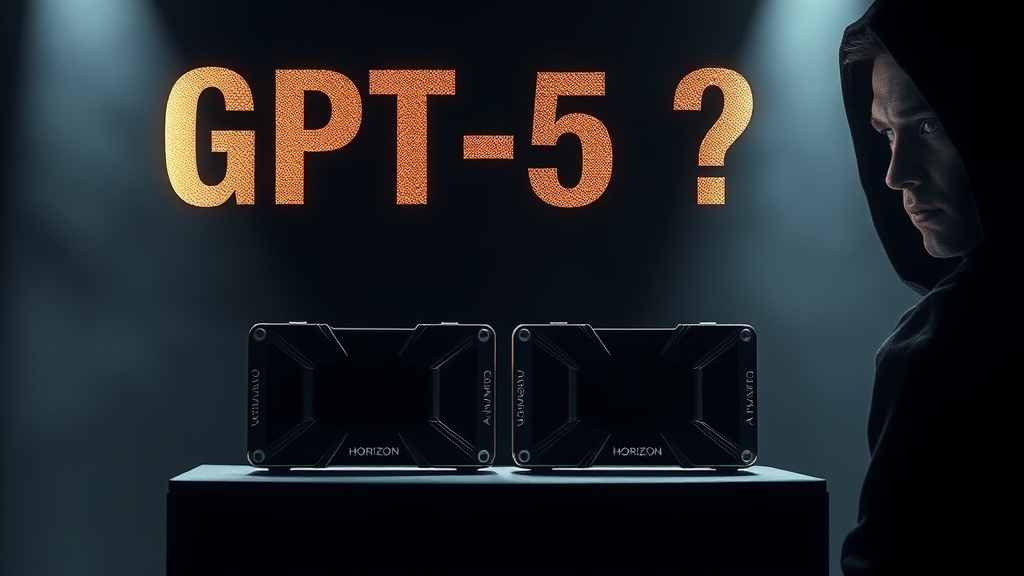
The Evidence Points to One Conclusion
When you add up Horizon’s professional-grade code architecture, stunning UI outputs, and a tokenization fingerprint matching Qwen, you get one clear suspect. The combination of exceptional coding abilities that surpass GPT-4, professional-grade UI design capabilities that shouldn’t exist yet, and the mysterious anonymous release strategy all align perfectly with what we’d expect from OpenAI’s next-generation model undergoing real-world testing.
The capabilities we’ve witnessed from Horizon match exactly what industry insiders have been whispering about GPT-5’s development priorities. OpenAI has publicly emphasized their focus on improving practical intelligence rather than just benchmark performance. They’ve talked about creating models that excel at real-world tasks like coding, design, and creative problem-solving. Horizon delivers on all these fronts while maintaining the same weaknesses we’d expect from a model optimized for practical applications rather than academic tests.
What really seals the case is how Horizon’s strengths and weaknesses fit OpenAI’s known development approach. The company has consistently prioritized user experience and practical utility over pure benchmark dominance. Remember how ChatGPT initially scored lower than expected on certain academic tests but revolutionized how people actually interacted with AI? Horizon follows the exact same pattern. It struggles with mathematical reasoning and traditional benchmarks while excelling at tasks that matter most to everyday users.

The timing of Horizon’s appearance provides another crucial piece of evidence. OpenAI has been under intense pressure to demonstrate continued innovation after competitors like Claude and Gemini have challenged their dominance in specific areas. They’ve hinted at major announcements coming soon but haven’t revealed specific timelines. Releasing GPT-5 anonymously for testing fits perfectly with their need to validate the technology while managing expectations and competitive pressures.
Industry observers have noted striking similarities between Horizon’s capabilities and leaked information about GPT-5’s development focus. Reports suggested that OpenAI was prioritizing improvements in code generation, creative tasks, and user interface understanding. Horizon excels in exactly these areas while showing the kind of reasoning integration that insiders expected from the next generation. The brief appearance of advanced reasoning capabilities in Horizon Alpha particularly aligns with rumors about GPT-5 incorporating elements similar to the o1 series.
Google and Anthropic can be ruled out due to tokenization and style mismatches. The infrastructure requirements and sophisticated capabilities suggest resources that only major AI labs possess. The tokenization patterns don’t match Google’s approach, and the design capabilities don’t align with Anthropic’s known strengths and development approach.
What does this mean if we’re really looking at an early version of GPT-5 being tested in the wild? The implications are staggering for the entire AI industry. We’re witnessing the future of artificial intelligence development, where companies test revolutionary capabilities through anonymous releases before formal announcements. This approach allows for genuine user feedback without the noise of brand expectations and competitive positioning.
The strategic brilliance of this approach becomes clear when you consider the alternative. Announcing GPT-5 officially would immediately trigger regulatory scrutiny, competitive analysis, and enormous public expectations. Every response would be dissected. Every limitation would be criticized. Every capability would be compared against impossible standards. But testing anonymously allows OpenAI to refine the model based on authentic user behavior and real-world performance data.
However, several questions and uncertainties prevent this from being a completely definitive conclusion. The tokenization analysis revealed patterns that don’t match OpenAI’s current methods, suggesting either experimental approaches or entirely different origins. The poor benchmark performance could indicate fundamental limitations rather than strategic choices. The anonymous release strategy, while logical, represents a departure from OpenAI’s typically transparent development approach.
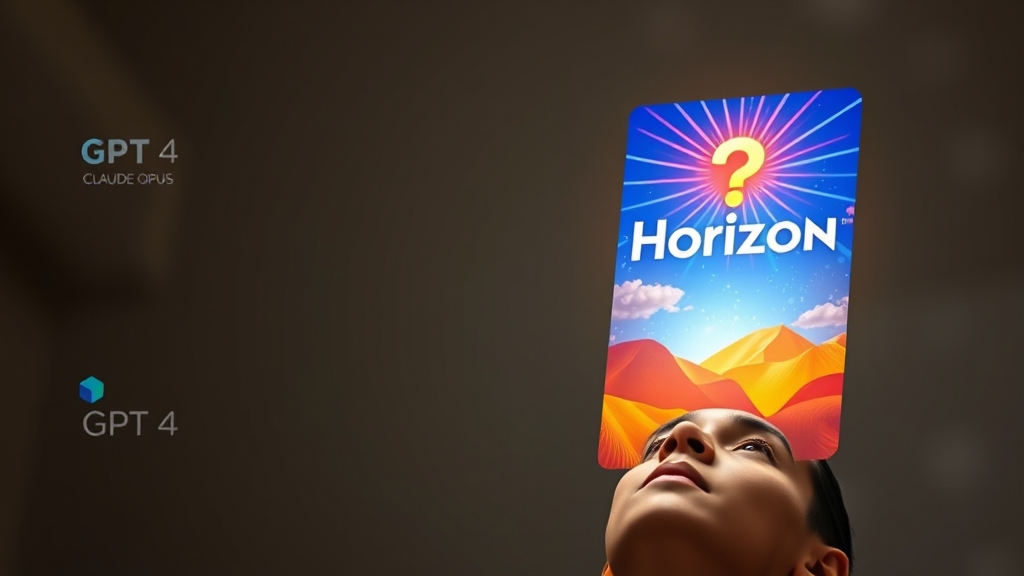
There’s also the possibility that we’re looking at something even more sophisticated than GPT-5. What if Horizon represents a completely new architecture that OpenAI developed alongside their traditional model improvements? The unique combination of capabilities and limitations could indicate experimental approaches that go beyond incremental improvements to existing systems.
The strongest argument for Horizon being OpenAI’s next-generation model comes from the totality of evidence rather than any single clue. The exceptional coding abilities, sophisticated design understanding, strategic anonymous release, timing with competitive pressures, alignment with known development priorities, and brief reasoning capabilities all point in the same direction. Even the puzzling elements like poor benchmark performance and unusual tokenization patterns could be explained by experimental approaches or intentional obfuscation.
When you combine the technical evidence with the strategic logic, the circumstantial timing, and the pattern of capabilities, the signs are hard to ignore. The results they’re getting are stunning, suggesting capabilities that represent a genuine leap forward rather than incremental improvements. Does this add up to GPT-5’s secret test run, or is there another explanation we’re missing? Sound off in the comments. But before you do, there’s something you need to know about what all this evidence really means.
Conclusion
The implications stretch far beyond just identifying one mysterious model. All signs point to a high-stakes shadow drop—whatever Horizon is, it’s more advanced than any public model. The exceptional coding abilities, professional UI design skills, and strategic anonymous release suggest we’re witnessing the future of AI development unfold in real time.

If you want to test Horizon yourself, act fast. Horizon Beta is still available on Open Router and T3 Chat, but these models could disappear anytime. The developers are clearly gathering data and making adjustments rapidly.
If you’ve tried Horizon, drop your craziest output in the comments. And if you want more early AI investigations, subscribe and hit the bell. Either way, Horizon shows we’re closer to next-gen AI than we thought.

